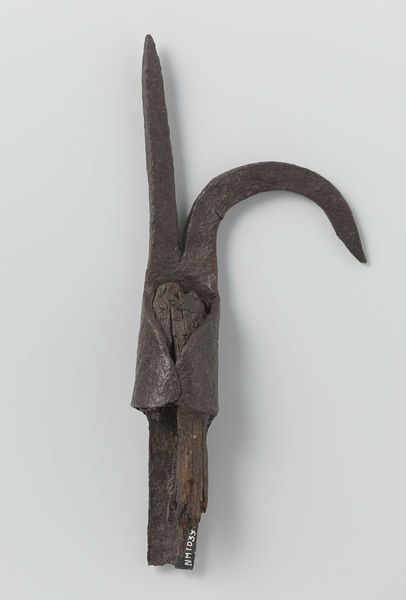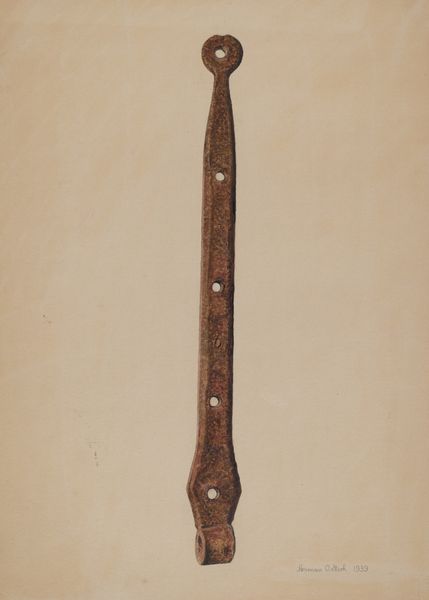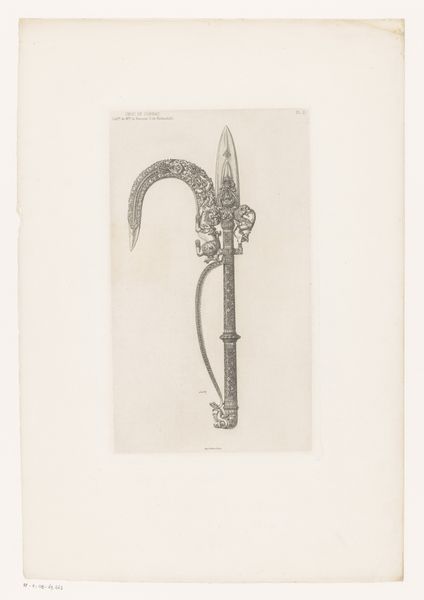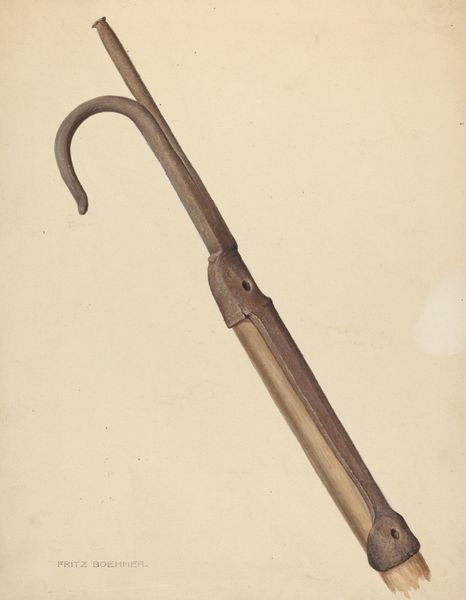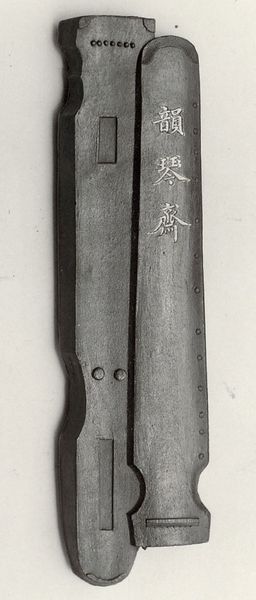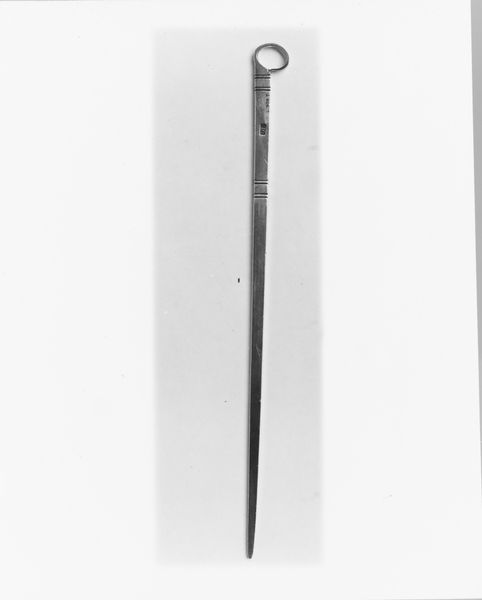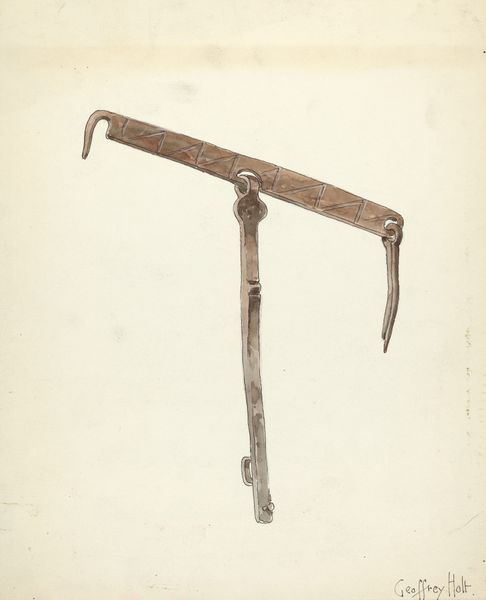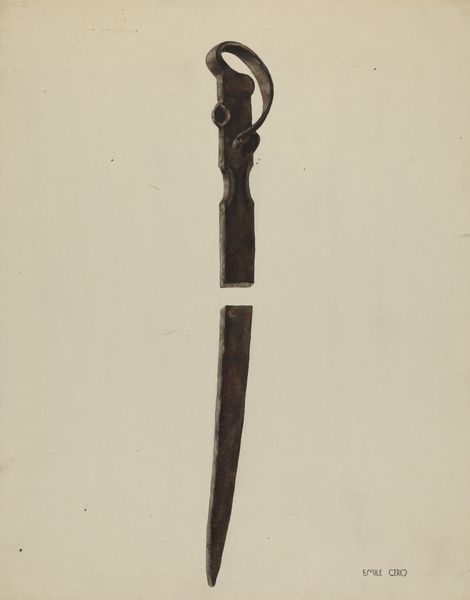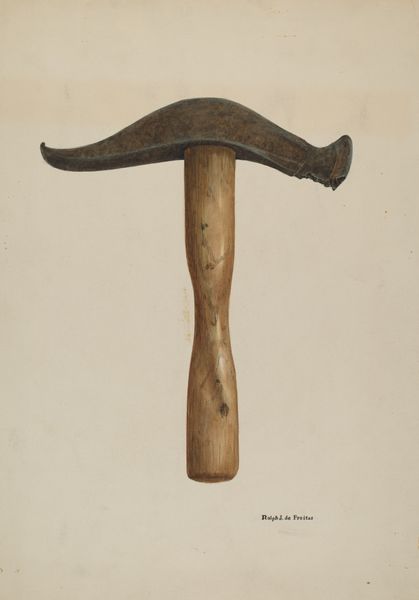
Kris (keris) ornamented with a veiled Durga, acting as the goddess of the netherworld, ready for frightening a victim to death; probably inscribed with a Koran verse in Arabic script. Garut, Garut disctrict, West Java province, 18th century. Possibly 1863 - 1864
0:00
0:00
photography, sculpture, gelatin-silver-print
#
sculpture
#
asian-art
#
photography
#
geometric
#
ancient-mediterranean
#
sculpture
#
gelatin-silver-print
#
islamic-art
Dimensions: height 210 mm, width 170 mm
Copyright: Rijks Museum: Open Domain
Editor: This intriguing gelatin-silver print, taken by Isidore Kinsbergen around 1863 or 1864, depicts a Kris—or keris—ornamented with a veiled Durga. I’m really struck by how a weapon can be elevated to a piece of religious art. What layers do you see within its cultural history? Curator: This photograph freezes a moment in the colonial gaze, doesn't it? Consider the Dutch East Indies at the time. Kinsbergen, a photographer of European origin, documented Javanese culture. But what power dynamics were at play when photographing this Kris, this ceremonial dagger laden with symbolism? Was it taken with genuine respect, or was it an act of appropriation, stripping the object of its intended use and deeper meaning? Editor: So the act of documentation itself becomes part of the history we need to consider? It is also marked by the historical conditions that framed its emergence and trajectory? Curator: Precisely! The Kris itself signifies power, spirituality. The depiction of Durga, as the goddess of the netherworld, and the potential inscription of Koranic verses add layers of syncretism, reflecting the blend of Hinduism, Buddhism, and Islam prevalent in Java. The blade may have been both an object of reverence and one of political strength, but in the photograph, especially when detached from its use-value, it gets subtly transformed, presented to the European audience in a way which likely flattened its complexities. Editor: That reframing really changes my perspective. Instead of seeing only the artistry and craftsmanship, I'm now thinking about how the photographer might have inadvertently, or perhaps intentionally, altered the narrative around the Kris. Curator: And what does it tell us that something that is a powerful symbol became available as a collected curio? Who got to decide its fate, and for whose gain? Editor: It's fascinating how this image opens up a conversation not just about the object itself, but also the socio-political landscape it inhabited, and how that shapes our present perception. Curator: Exactly, and how institutions can serve to highlight the beauty of syncretism, but must not ignore how museums can themselves become part of the exercise of power.
Comments
No comments
Be the first to comment and join the conversation on the ultimate creative platform.

